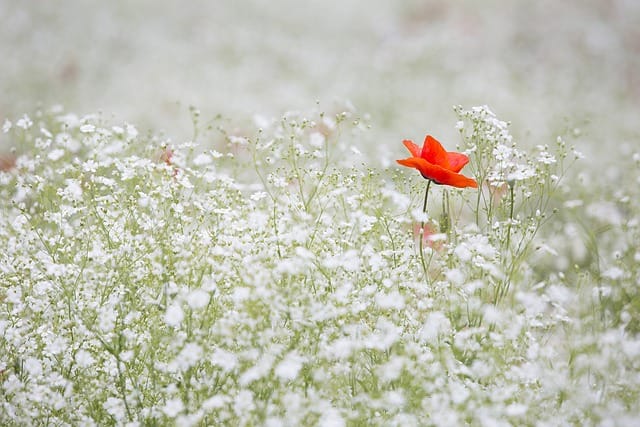How to grow Baby's Breaths
The Baby's Breath flower, scientifically known as Gypsophila, is a delicate and beautiful blossom that is widely used in floral arrangements

In this article:
- Introduction to Baby's Breath
- Choosing the Right Varieties
- Selecting a Suitable Location
- Preparing the Soil
- Propagation Methods
- Planting Baby's Breath
- Watering and Fertilizing
- Pruning and Maintenance
- Dealing with Common Pests and Diseases
- Harvesting Baby's Breath Flowers
- Tips for Extending the Blooming Season
- Using Baby's Breath in Floral Arrangements
- Fun Facts and Interesting Varieties
- Frequently Asked Questions
- Conclusion
Introduction to Baby's Breath
The Baby's Breath flower, scientifically known as Gypsophila, is a delicate and beautiful blossom that is widely used in floral arrangements. Known for its clusters of small, airy flowers, the Baby's Breath adds a touch of elegance and sophistication to any garden or bouquet.
Choosing the Right Varieties
When growing Baby's Breath, it is important to choose the right variety for your specific needs. Common varieties include Gypsophila paniculata, Gypsophila elegans, and Gypsophila muralis. Each variety has its own unique characteristics and growing requirements, so it is essential to do some research and select the one that suits your preferences and climate best.
Selecting a Suitable Location
Baby's Breath thrives in full sun and well-drained soil. It is important to choose a location in your garden that receives at least 6 hours of direct sunlight daily. Additionally, ensure that the soil has good drainage, as Baby's Breath does not tolerate waterlogged conditions.
Preparing the Soil
Before planting Baby's Breath, prepare the soil by removing any weeds or debris and loosening it with a garden fork or tiller. The ideal soil for Baby's Breath is slightly alkaline with a pH level between 6.0 and 8.0. If your soil is too acidic, you can amend it by adding lime.
Propagation Methods
There are several methods of propagating Baby's Breath, including seed sowing, division, and stem cuttings. Seeds can be started indoors 6-8 weeks before the last frost date or directly sown in the garden. Division can be done in early spring or early fall, while stem cuttings are typically taken during the summer months.
Planting Baby's Breath
When planting Baby's Breath, dig a hole that is slightly larger than the root ball and place the plant in it at the same depth it was previously growing. Ensure that the soil is firmly packed around the roots to provide stability and water the plant thoroughly.
Watering and Fertilizing
Water the Baby's Breath regularly, especially during dry periods, to keep the soil evenly moist but not waterlogged. Avoid overwatering, as it can lead to root rot. Fertilize the plants every 4-6 weeks during the growing season using a balanced, slow-release fertilizer to promote healthy growth and abundant blooms.
Pruning and Maintenance
Prune Baby's Breath regularly to remove spent flowers and encourage new growth. This will also prevent the plant from becoming leggy. Cut back the stems to about half their length after flowering to promote bushier growth. In colder regions, it is advisable to mulch around the plants to protect them during winter.
Dealing with Common Pests and Diseases
Baby's Breath is generally resistant to pests and diseases. However, it can occasionally be affected by aphids, spider mites, or powdery mildew. Regularly inspect the plants and take appropriate measures if any issues arise. In most cases, spraying with water or a mild insecticidal soap solution will resolve the problem.
Harvesting Baby's Breath Flowers
Harvest Baby's Breath flowers when they are fully open but before they start dropping their petals. Cut the stems early in the morning or late in the evening when the temperature is cooler. To maximize vase life, place the freshly cut stems in a bucket of water and keep them in a cool, dark place for a few hours before arranging them.
Tips for Extending the Blooming Season
To extend the blooming season of Baby's Breath, deadhead the spent flowers regularly. This will promote the production of new blooms. Additionally, practicing proper watering, fertilizing, and maintenance techniques will keep the plants healthy and encourage continuous flowering.
Using Baby's Breath in Floral Arrangements
Baby's Breath is a favorite among florists due to its delicate appearance and ability to complement various types of flowers. It adds a lovely texture and a touch of romance to floral arrangements. It can be used as a filler flower to add volume to bouquets or as the main focus in delicate, monochromatic arrangements.
Fun Facts and Interesting Varieties
Did you know that Baby's Breath is native to Europe, Asia, and Africa? It is also sometimes called "Gyp" in the floral industry. In addition to the common varieties mentioned earlier, there are also unique cultivars such as 'Bristol Fairy' with double flowers, 'Rosea' with pink blooms, and 'Snowflake' with an abundance of small white flowers.
Frequently Asked Questions
Q: Can Baby's Breath be grown in containers?
A: Yes, Baby's Breath can be grown in containers as long as the pot has good drainage and the plant receives adequate sunlight.
Q: How long does Baby's Breath flower last in a vase?
A: When properly cared for, Baby's Breath flowers can last up to 7-10 days in a vase.
Q: Does Baby's Breath have a pleasant fragrance?
A: Yes, Baby's Breath has a light, sweet fragrance that adds to its overall allure.
Conclusion
Growing Baby's Breath can bring beauty and elegance to your garden or floral arrangements. By following the tips and techniques outlined in this article, you can successfully cultivate this stunning flower and enjoy its delicate blooms for years to come. So roll up your sleeves, get your gardening tools ready, and start growing your own Baby's Breath garden today!
